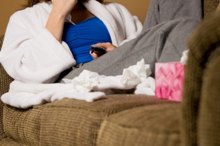Finasteride and Acne
Finasteride is a medication that is sold under the brand name Proscar to treat hypertrophy or enlargement of the prostate gland in men 2. It is also sold as Propecia to treat male pattern baldness. It works by blocking the production of a potent form of the androgen (male hormone) testosterone. Excess levels of this hormone can trigger acne, and finasteride might also be beneficial in treating acne by decreasing excess sebum (oil) in the skin.
Common Uses
Finasteride is commonly prescribed as Proscar to treat benign prostatic hypertrophy (BPH) in men. In BPH, the prostate gland becomes enlarged and can suppress the urethra, making urination difficult and painful. This medication is also prescribed under the brand name Propecia to decrease hair loss because of male pattern baldness.
- Finasteride is commonly prescribed as Proscar to treat benign prostatic hypertrophy (BPH) in men.
- This medication is also prescribed under the brand name Propecia to decrease hair loss because of male pattern baldness.
How it Works
Herbal Testosterone Blocker
Learn More
The hormone testosterone does not act directly on the prostate gland and skin or cause male pattern baldness. An enzyme in the body called 5 alpha-reductase must first converts it to a more potent form, dihydrotestosterone (DHT). Excess levels of DHT can cause the prostate to enlarge, hair loss to occur on the front and top of the head and also affect the skin’s sebaceous glands. The drug finasteride works by selectively inhibiting this enzyme, thus decreasing the transformation of testosterone to DHT.
- The hormone testosterone does not act directly on the prostate gland and skin or cause male pattern baldness.
- Excess levels of DHT can cause the prostate to enlarge, hair loss to occur on the front and top of the head and also affect the skin’s sebaceous glands.
Effects on Acne
Hormones also play a key role in the development of acne; high levels of androgenic hormones such as dihydrotestoterone (DHT) can cause excess sebum (oil) production, leading to acne flare-ups. Hormonal therapies such as finasteride help decrease excess DHT in the blood, decreasing acne and other effects. According to research published in the "Journal of Drugs in Dermatology," anti-androgen medications such as finasteride might help prevent acne by blocking the effects of androgens on the sebum-producing sebaceous glands 1. However, it is still not proven that this is an effective acne treatment, and the FDA has not yet approved finasteride for acne treatment 2.
Dosages
Finasteride 5Mg Side Effects
Learn More
The FDA’s Medication Guide advises that finasetride should be taken in does of 5 mg per day for prostate problems 2. The dosing for male pattern baldness is 1 mg once a day. This medication should be taken at the same time each day and only under a doctor's supervision.
Risks
Side effects of finasteride include the decrease of body hair in men by up to 50 percent and semen volume by 25 percent. Women who take finasteride to decrease excess male hormones should not use it if they are pregnant or might become pregnant. Individuals with liver problems should not take finasteride as the liver filters all medications from the body.
- Side effects of finasteride include the decrease of body hair in men by up to 50 percent and semen volume by 25 percent.
- Women who take finasteride to decrease excess male hormones should not use it if they are pregnant or might become pregnant.
Related Articles
References
- Journal of Drugs in Dermatology: 5 alpha-reductase and finasteride in pattern alopecia and acne
- FDA: Medication Guide, Finasteride
- Azziz R. The Evaluation and Management of Hirsutism. Obstet. Gynecol. 101, 995-1007 (2003). doi:10.1016/s0029-7844(02)02725-4
- Archer JS, Chang RJ. Hirsutism and acne in polycystic ovary syndrome. Best Pract Res Clin Obstet Gynaecol. 2004;18(5):737-54. doi:10.1016/j.bpobgyn.2004.05.007
- Bartsch G, Rittmaster RS, Klocker H. Dihydrotestosterone and the concept of 5alpha-reductase inhibition in human benign prostatic hyperplasia. Eur Urol. 2000;37(4):367-80. doi:10.1159/000020181
- Tartagni M, Schonauer MM, Cicinelli E, et al. Intermittent low-dose finasteride is as effective as daily administration for the treatment of hirsute women. Fertil Steril. 2004;82(3):752-5. doi:10.1016/j.fertnstert.2004.02.118
- Habif TP. Clinical Dermatology E-Book. Elsevier Health Sciences; 2015.
- Alsaad D, Lee BH, Al-obaidly S. Finasteride use during pregnancy and early neonatal outcome: a case report. Int J Clin Pharm. 2018;40(4):803-805. doi:10.1007/s11096-018-0661-5
- University of Michigan. Finasteride. Michigan Medicine | Health Library.
- Azziz R. The Evaluation and Management of Hirsutism. Obstet. Gynecol. 101, 995-1007 (2003).
- Dallob AL, Sadick NS, Unger W et al. The Effect of Finasteride, a 5 Creductase Inhibitor on Scalp Skin, Testosterone and Dihydrotestosterone Concentrations I Patients With Male Pattern Baldness. J. Clin. Endocrinol. Metab. 79, 703-706 (1994).
- Lumachi F, Rondinone R. Use of Cyproterone Acetate, Finasteride and Spironolactone to Treat Idiopathic Hirsutism. Fertil. Steril. 79, 942-94 (2003).
Writer Bio
Noreen Kassem is a hospital doctor and a medical writer. Her articles have been featured in "Women's Health," "Nutrition News," "Check Up" and "Alive Magazine." Kassem also covers travel, books, fitness, nutrition, cooking and green living.









